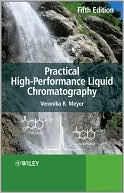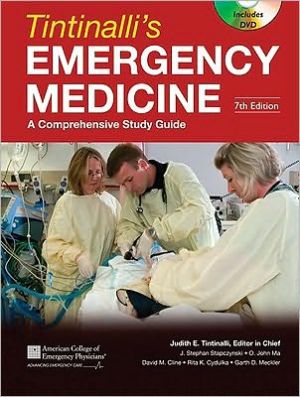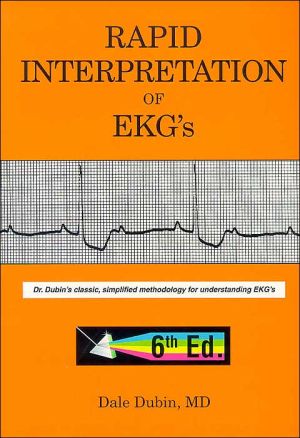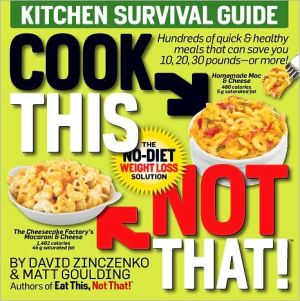Practical High-Performance Liquid Chromatography
Search in google:
Jump into the HPLC adventure! Three decades on from publication of the 1st German edition of Veronika Meyer's book on HPLC, this classic text remains one of the few titles available on general HPLC aimed at practitioners. New sections on the following topics have been included in this fifth edition:Comparison of HPLC with capillary electrophoresisHow to obtain peak capacityvan Deemter curves and other coherencesHydrophilic interaction chromatographyMethod transferComprehensive two-dimensional HPLCFast separations at 1000 barHPLC with superheated water In addition, two chapters on the instrument test and troubleshooting in the appendix have been updated and expanded by Bruno E. Lendi, and many details have been improved and numerous references added. A completely new chapter is presented on quality assurance covering:Is it worth the effort?Verification with a second methodMethod validationStandard operating proceduresMeasurement uncertaintyQualifications, instrument test, and system suitability testThe quest for quality Reviews of earlier editions "That this text is written by an expert in both the practice and teaching of HPLC is evident from the first paragraph....not only an enjoyable, fascinating and easy read, but a truly excellent text that has and will serve many teachers, students and practitioners very well." —The Analyst “…provides essential information on HPLC for LC practitioners in academia, industry, government, and research laboratories…a valuable introduction." - American Journal of Therapeutics
Preface to the Fifth Edition xiiiImportant and Useful Equations for HPLC 11 Introduction 51.1 HPLC: A powerful separation method 51.2 A first HPLC experiment 51.3 Liquid chromatographic separation modes 81.4 The HPLC instrument 91.5 Safety in the HPLC laboratory 101.6 Comparison between high-performance liquid chromatography and gas chromatography 111.7 Comparison between high-performance liquid chromatography and capillary electrophoresis 121.8 Units for pressure, length and viscosity 131.9 Scientific journals 141.10 Recommended books 152 Theoretical Principles 172.1 The chromatographic process 172.2 Band broadening 192.3 The chromatogram and its purport 232.4 Graphical representation of peak pairs with different degree of resolution 302.5 Factors affecting resolution 352.6 Extra-column volumes (dead volumes) 402.7 Tailing 412.8 Peak capacity and statistical resolution probability 462.9 Effects of temperature in HPLC 492.10 The limits of HPLC 512.11 How to obtain peak capacity 553 Pumps 593.1 General requirements 593.2 The short-stroke piston pump 593.3 Maintenance and repair 623.4 Other pump designs 634 Preparation of Equipment up to Sample Injection 654.1 Selection of the mobile phase 654.2 Preparation of the mobile phase 674.3 Gradient systems 684.4 Capillary tubing 704.5 Fittings 724.6 Sample injectors 744.7 Sample solution and sample volume 785 Solvent Properties 815.1 Table of organic solvents 815.2 Solvent selectivity 835.3 Miscibility 835.4 Buffers 845.5 Shelf life of mobile phases 875.6 The mixing cross 886 Detectors 916.1 General 916.2 UV detectors 966.3 Refractive index detectors 996.4 Fluorescence detectors 1016.5 Electrochemical (amperometric) detectors 1036.6 Light-scattering detectors 1046.7 Other detectors 1066.8 Multiple detection 1076.9 Indirect detection 1086.10 Coupling with spectroscopy 1097 Columns and Stationary Phases 1177.1 Columns for HPLC 1177.2 Precolumns 1197.3 General properties of stationary phases 1207.4 Silica 1257.5 Chemically modified silica 1267.6 Styrene-divinylbenzene 1297.7 Some other stationary phases 1337.8 Column care and regeneration 1368 HPLC Column Tests 1418.1 Simple tests for HPLC columns 1418.2 Determination of particle size 1438.3 Determination of breakthrough time 1448.4 The test mixture 1468.5 Dimensionless parameters for HPLC column characterization 1488.6 The van Deemter equation from reduced parameters and its use in column diagnosis 1528.7 van Deemter curves and other coherences 1538.8 Diffusion coefficients 1559 Adsorption Chromatography: Normal-Phase Chromatography 1599.1 What is adsorption? 1599.2 The eluotropic series 1629.3 Selectivity properties of the mobile phase 1659.4 Choice and optimization of the mobile phase 1669.5 Applications 16810 Reversed-Phase Chromatography 17310.1 Principle 17310.2 Mobile phases in reversed-phase chromatography 17410.3 Solvent selectivity and strength 17710.4 Stationary phases 18110.5 Method development in reversed-phase chromatography 18510.6 Applications 18810.7 Hydrophobic interaction chromatography 19111 Chromatography with Chemically Bonded Phases 19511.1 Introduction 19511.2 Properties of some stationary phases 19511.3 Hydrophilic interaction chromatography 20012 Ion-Exchange Chromatography 20312.1 Introduction 20312.2 Principle 20312.3 Properties of ion exchangers 20412.4 Influence of the mobile phase 20712.5 Special possibilities of ion exchange 20812.6 Practical hints 21012.7 Applications 21313 Ion-Pair Chromatography 21713.1 Introduction 21713.2 Ion-pair chromatography in practice 21813.3 Applications 22013.4 Appendix: UV detection using ion-pair reagents 22114 Ion Chromatography 22514.1 Principle 22514.2 Suppression techniques 22614.3 Phase systems 22614.4 Applications 23015 Size-Exclusion Chromatography 23115.1 Principle 23115.2 The calibration chromatogram 23415.3 Molecular mass determination by means of size-exclusion chromatography 23815.4 Coupled size-exclusion columns 24115.5 Phase systems 24315.6 Applications 24416 Affinity Chromatography 24916.1 Principle 24916.2 Affinity chromatography as a special case of HPLC 25116.3 Applications 25217 Choice of Method 25517.1 The various possibilities 25517.2 Method transfer 26018 Solving the Elution Problem 26318.1 The elution problem 26318.2 Solvent gradients 26418.3 Column switching 27018.4 Comprehensive two-dimensional HPLC 27218.5 Optimization of an isocratic chromatogram using four solvents 27318.6 Optimization of the other parameters 27618.7 Mixed stationary phases 28419 Analytical HPLC 28519.1 Qualitative analysis 28519.2 Trace analysis 28719.3 Quantitative analysis 29119.4 Recovery 29619.5 Peak-height and peak-area determination for quantitative analysis 29919.6 Integration errors 30319.7 The detection wavelength 30419.8 Derivatization 30619.9 Unexpected peaks: Ghost and system peaks 30820 Quality Assurance 31120.1 Is it worth the effort? 31120.2 Verification with a second method 31220.3 Method validation 31220.4 Standard operating procedures 31420.5 Measurement uncertainty 31520.6 Qualifications, instrument test and system suitability test 31720.7 The quest for quality 31821 Preparative HPLC 32121.1 Problem 32121.2 Preparative HPLC in practice 32221.3 Overloading effects 32521.4 Fraction collection 32821.5 Recycling 33021.6 Displacement chromatography 33122 Separation of Enantiomers 33322.1 introduction 33322.2 Chiral mobile phases 33522.3 Chiral liquid stationary phases 33622.4 Chiral solid stationary phases 33722.5 Indirect separation of enantiomers 34523 Special Possibilities 34923.1 Micro, capillary and chip HPLC 34923.2 High-speed and super-speed HPLC 35223.3 Fast separations at 1000 bar: UHPLC 35323.4 HPLC with supercritical mobile phases 35523.5 HPLC with superheated water 35923.6 Electrochromatography 36124 Appendix 1 Applied HPLC Theory 36325 Appendix 2 How to Perform the Instrument Test 37325.1 Introduction 37325.2 Test sequence 37325.3 Preparations 37425.4 Pump test 37725.5 UV detector test 37925.6 Autosampler test 38325.7 Column oven test 38325.8 Equations and calculations 38425.9 Documentation 38526 Appendix 3 Troubleshooting 38726.1 Pressure problems 38726.2 Leak in the pump system 38926.3 Deviating retention times 38926.4 Injection problems 39026.5 Baseline problems 39026.6 Peak shape problems 39226.7 Problems with light-scattering detectors 39326.8 Other causes 39426.9 Instrument test 39527 Appendix 4 Column Packing 397Index of Separations 401Subject Index 403








